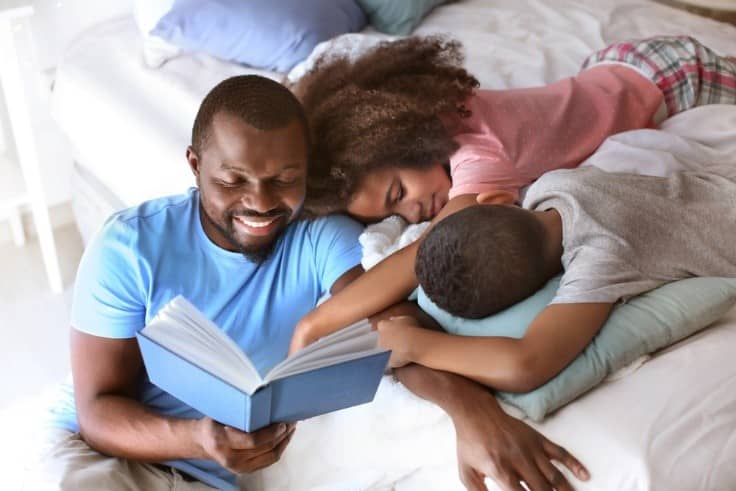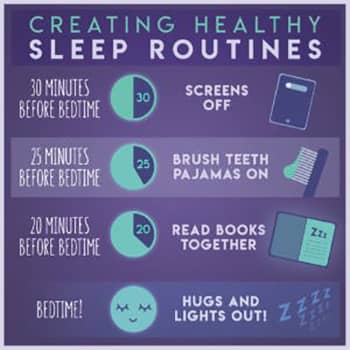
by Diana Hembree, StressHealth.org
If you had a rough childhood, research suggests you are more likely to have nightmares and other sleep problems. Kids who’ve lived through homelessness, neighborhood violence, parental divorce, abuse or other Adverse Childhood Experiences (ACEs) may also be more likely to experience sleep disturbances, including bedwetting and trouble getting to sleep. This can do more than make them tired and cranky. Racking up an ongoing sleep “debt” is linked with other health and behavior problems, including obesity, aggression, difficulty learning and focusing at school, and even diabetes.
Tips for a good night’s sleep
What can you do if your child has sleep problems that won’t go away? Here are some tips:

Play outside every day. Start the bedtime routine long before kids actually go to bed, says Harvey Karp, MD, of the USC School of Medicine and author of The Happiest Toddler on the Block. Toddlers should be playing throughout the day, and older kids need at least an hour of vigorous exercise each day. Plenty of fresh air, sunshine and exercise is the best recipe for a sound sleep, according to Karp. If your neighborhood isn’t safe, try a park in a safer location or devise fun games indoors (dance contests, hula hoops, jump rope, and more).
Have kids turn off their electronics an hour or two before bedtime. According to the National Sleep Foundation, the blue light from these screens “can delay the release of sleep-inducing melatonin” and give children a case of mini-jet lag.
Create a relaxing sleep routine. This often involves a bath, bedtime story or reading aloud, and hugs before lights out. Like family dinners, this can provide an important daily ritual that will help kids feel connected and secure.
Choose calm shows for preschoolers. A 2011 study in Pediatrics found that kids who watched violent TV during the day were more likely to have problems sleeping. And “violent,” in this study, included even cartoons like SpongeBob Squarepants, Bugs Bunny and Scooby Doo. The cartoon mayhem of SpongeBob and Bugs Bunny may amuse us, but consider how all that slapping, punching, chasing and shooting looks to a 3-year-old. A follow-up study found that substituting shows like Curious George or Sesame Street resulted in a better night’s sleep.

Set a regular bedtime. All kids need a good night’s sleep. Research shows this is essential for neurotransmitters, the chemicals that allow brain cells to communicate. This sleep chart from the CDC can help you estimate of how many hours of sleep you and your child need. Did you know preschoolers need 12 to 14 hours of sleep every 24 hours, counting naps?
Talk with your doctor. If the problem is something like sleep apnea, the problem may require medical treatment.
References
Kajeepeta, S., et al. “Adverse Childhood Experiences Are Associated with Adult Sleep Disorders: A Systematic Review.” (2015, March). Sleep Medicine.
Garrison, M.M., Liekweg, K., and Christakis, D.A. (2011, June). “Media use and child sleep: the impact of content, timing, and environment.” Pediatrics 128(1):29–35.
Diana Hembree is a science writer for the Center for Youth Wellness. She is an award-winning journalist who has worked at Time Inc., the Center for Investigative Reporting and the Energy Bioscience Institute and has written or edited for Forbes, HealthDay, the Washington Post, PBS Frontline, Vibe and many other places. She can be reached at stresshealthnow@centerforyouthwellness.org.





